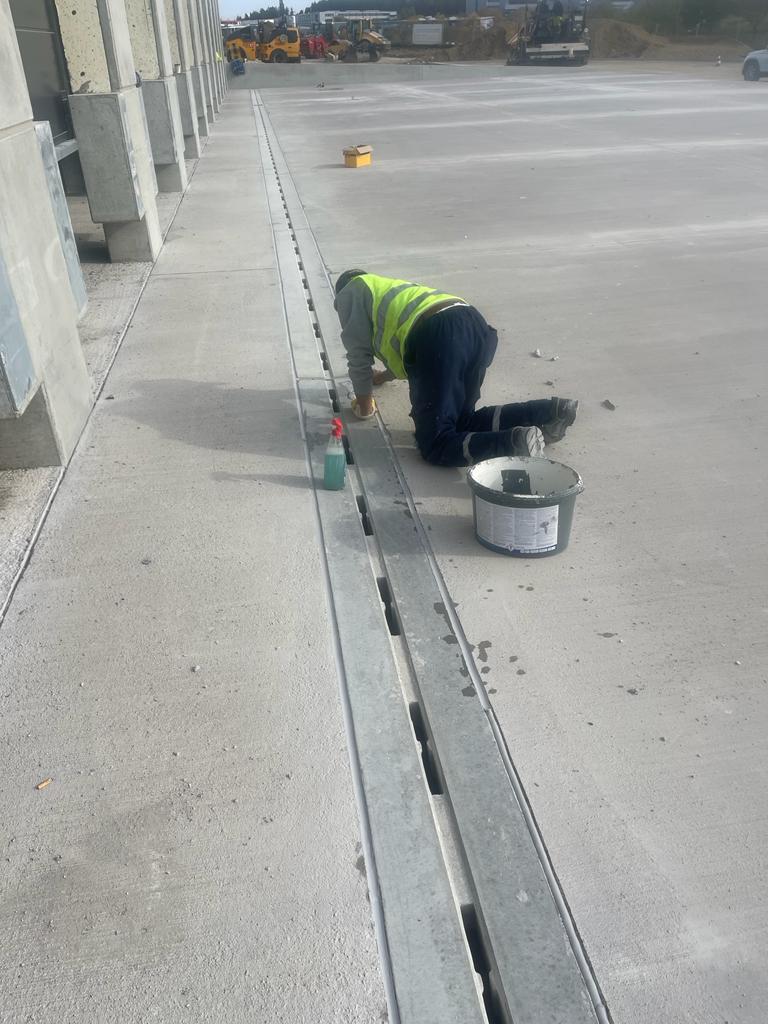We offer our customers ready-made services, also for external surfaces. These serve as roadways, parking areas or are part of overloading areas and can be constructed with classic mat reinforcement or without reinforcement bars. In any case, the formwork work must be carried out very meticulously prior to concreting, and the obligatory joint cutting of the fresh concrete afterwards is essential. The surfaces are not troweled, but rather ground and broomed. In contrast to hall surfaces, exterior surfaces are treated with a liquid film (curing).




While the concrete surface in hall floors usually needs to be as smooth as possible, surfaces in outdoor areas that are driven on by vehicles or walked on by people need to be roughened for optimum use. With the so-called broom finish, grooves are made in the surface using a special broom after the fresh concrete surface has been stripped in order to roughen the surface. This ensures that run-off water can flow unhindered into drainage channels and that the surface is non-slip when walked and driven on.
Curing is used as an intermediate treatment or curing agent, specially developed to protect against the evaporation of moisture from concrete surfaces. We always apply curing to exterior surfaces.
Just like indoor floors, outdoor surfaces also react to thermal and mechanical loads. To avoid cracking, unlike indoor floors, no joint profiles are used in outdoor areas, but the joints are cut by machine, usually in a 5 m x 6 m grid. As soon as the slab movements have come to a standstill, the joints are widened at the top edge and grouted, i.e. sealed. This means that neither rainwater nor contaminated liquids can penetrate the cut joints and cause damage.
The floor joint sealant is particularly suitable for grouting movement and connection joints in indoor and outdoor areas in concrete and screed that are exposed to stationary loads or rolling traffic. This applies to joints in warehouses, production halls, parking decks and underground garages.
In addition to appropriate substrate pre-treatment, PE backfill material is first applied to the joint. It is then important to apply the floor joint sealant free of bubbles and cavities to ensure complete contact with the joint edges. If necessary, the floor joint sealant can be smoothed with a sealant smoothing agent.
Feel free to contact us at any time by phone, email or contact form for a personal consultation and a customized offer.